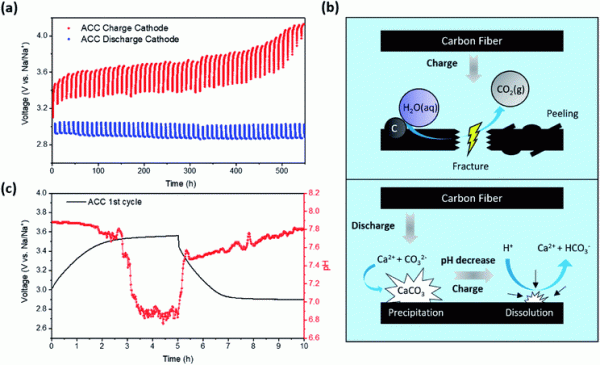Identifying the mechanism and impact of parasitic reactions occurring in carbonaceous seawater battery cathodes
- Journal
- Journal of Materials Chemistry A
- Vol
- 8
- Page
- 9185-9193
- Year
- 2020
Rechargeable seawater batteries (SWBs) have recently been investigated as a potential candidate for future energy storage systems, owing to their cost-effectiveness and environmentally friendly properties derived from the use of naturally abundant seawater as a catholyte. However, the fundamental understanding of the cathode reactions in SWBs is not yet fully elucidated; hence, an investigation of their mechanisms is imperative for future development. Herein, parasitic cathode reactions other than the previously identified oxygen evolution/reduction reactions (OERs/ORRs) are identified for the first time using activated carbon cloth (ACC) as the cathode current collector. In this study, carbon fibers of the current collector were observed to undergo cathode side-reactions such as fiber-fracturing carbon corrosion during charging and surface-insulating CaCO3 precipitation via carbon dioxide capture during discharging, both resulting in cathode performance failure. Moreover, carbon corrosion was determined to be the dominant factor behind performance degradation under normal charge–discharge cycling conditions in comparison to CaCO3 precipitation, which was found to be a reversible phenomenon during the operation of the SWB. These results provide insight for future work into enhancing the longevity of SWBs by identifying carbon corrosion as the main cathode performance degradation mechanism.

